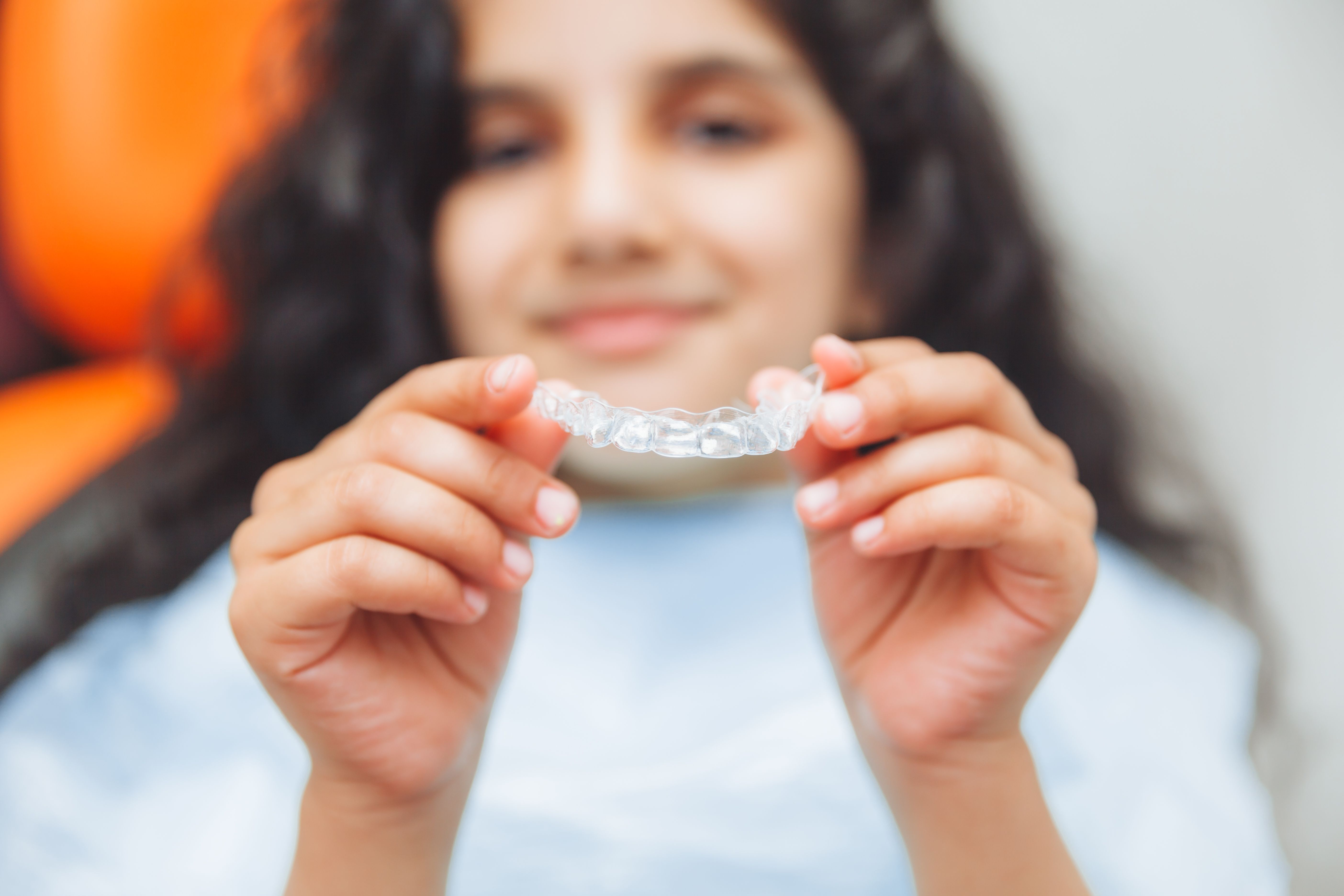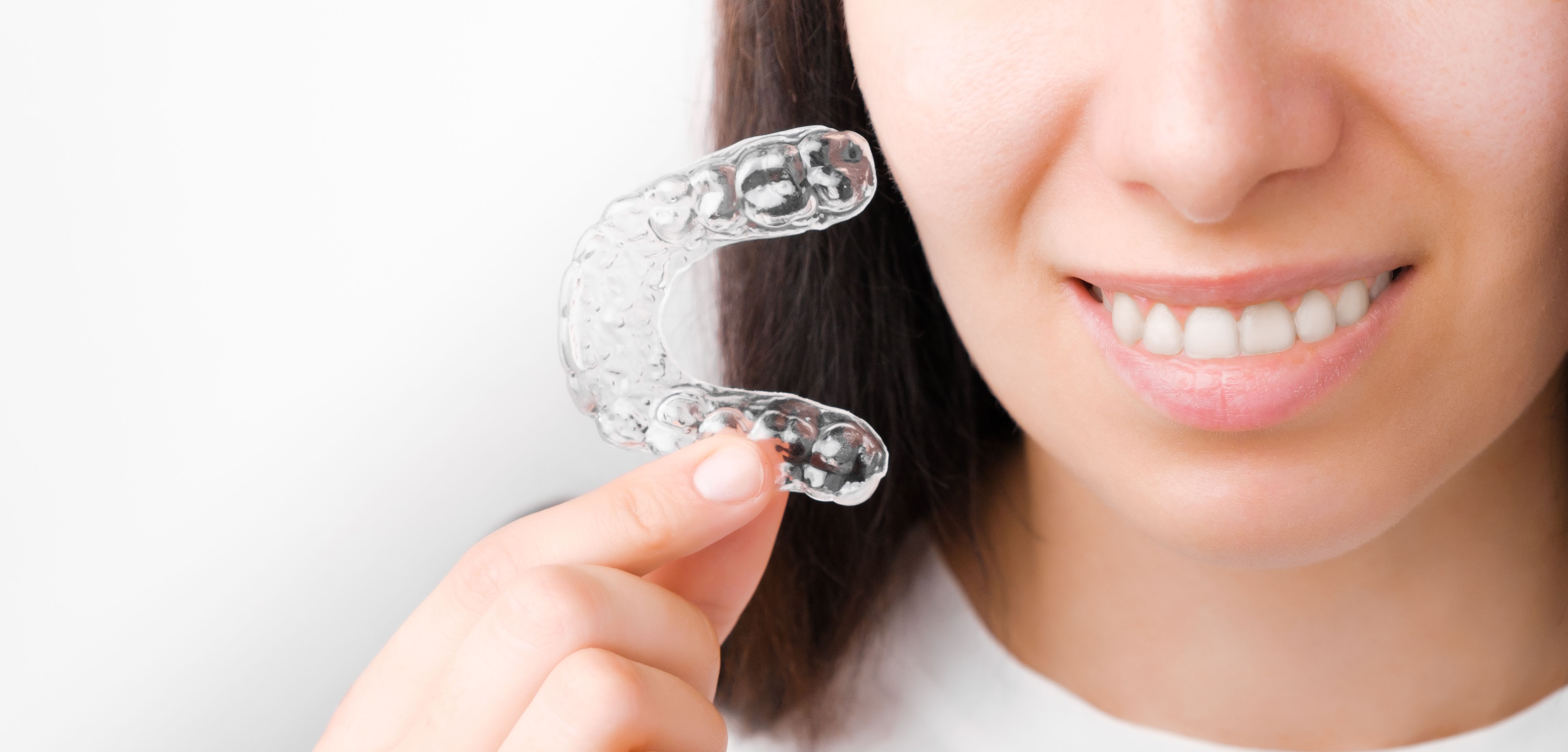

Invisalign and Teenagers: Advantages and Considerations
As adolescence is a transformative period of self-discovery and growth, teenagers often face various challenges, including orthodontic concerns. For those seeking a straighter smile without the discomfort and self-consciousness associated with traditional braces, Invisalign has emerged as a popular alternative. Invisalign offers a discreet and convenient orthodontic solution that aligns teeth using clear, removable aligners.
This blog post will explore the advantages and considerations of Invisalign specifically tailored to teenagers. By delving into the benefits of Invisalign and addressing the critical factors teenagers should consider, we aim to empower teenagers and their parents to make informed decisions regarding their orthodontic treatment.
The Advantages of Invisalign for Teenagers
Regarding orthodontic treatment, teenagers often seek options that offer effectiveness and discretion. With its clear aligners, Invisalign has gained immense popularity among this age group. Here are some key advantages of Invisalign for teenagers:
- Nearly Invisible Appearance: One of the most significant advantages of Invisalign for teenagers is its virtually invisible appearance. The clear aligners blend seamlessly with the teeth, allowing teenagers to undergo orthodontic treatment without drawing unnecessary attention. This can particularly appeal to teenagers who may feel self-conscious about wearing traditional braces.
- Removable Aligners: Invisalign aligners are removable, offering flexibility and convenience for teenagers. Unlike fixed braces requiring professional adjustment or removal, Invisalign allows teenagers to take out their aligners when eating, brushing, and flossing. This feature eliminates the restrictions on food choices that come with braces and makes maintaining oral hygiene much easier.
- Improved Comfort: Invisalign aligners are custom-made to fit snugly over the teeth, reducing discomfort during treatment. Invisalign aligners are generally more comfortable than traditional braces' brackets and wires, which can sometimes cause irritation and oral sores. While some teenagers may experience mild pressure or soreness during the initial stages of wearing a new set of aligners, this discomfort typically subsides quickly.
- Fewer Dental Appointments: Invisalign treatment typically requires fewer orthodontist visits than traditional braces. Once the aligners are provided, teenagers must visit their orthodontist for check-ups and progress assessments every six to eight weeks. This can be particularly convenient for busy teenagers juggling school, extracurricular activities, and social commitments.
- Compatibility with Teenage Lifestyle: Teenagers lead active lives, participating in sports, playing musical instruments, and engaging in various social activities. Invisalign aligners are removable, which allows teenagers to pursue their passions without interference.
- Boost in Self-Confidence: A straighter smile can significantly enhance a teenager's self-confidence. Invisalign helps address orthodontic concerns discreetly, allowing teenagers to feel more confident in social situations. With Invisalign, they can smile and interact with others without feeling self-conscious about their orthodontic treatment.
Considerations for Teenagers Considering Invisalign
While Invisalign offers several advantages for teenagers, it's crucial to consider certain factors before embarking on this orthodontic treatment journey. Here are some critical considerations for teenagers considering Invisalign:
- Compliance and Responsibility: Invisalign treatment requires high commitment and responsibility. It's essential to assess whether your teenager is willing to follow the treatment plan diligently and take responsibility for wearing and caring for their aligners. Teenagers must wear aligners for 20 to 22 hours daily to ensure effective progress.
- Lifestyle Adjustments: The Invisalign aligners are designed to be removable, which allows teenagers to take them out when eating or drinking. However, they must make appropriate food choices to prevent damaging the aligners. Teenagers need to be willing to make certain adjustments to their lifestyle and dietary habits during their Invisalign treatment. Sticky, chewy, or hard foods should be avoided as they can affect the aligner's fit and effectiveness.

- Commitment to Appointments: While Invisalign requires fewer dental appointments compared to traditional braces, it's still crucial for teenagers to attend regular check-ups and follow-up visits with their orthodontist. These appointments are essential for monitoring progress, adjusting, and ensuring the treatment is on track. Teenagers should be prepared to commit to these appointments and follow the orthodontist's guidance throughout treatment.
- Oral Hygiene: Invisalign aligners are removable, making it easier to maintain good oral hygiene than traditional braces. However, teenagers must be committed to brushing their teeth after every meal or snack before reinserting the aligners. They should also clean their aligners regularly using the recommended methods to prevent bacterial buildup. Assessing whether your teenager is willing to adopt and maintain proper oral hygiene practices during Invisalign treatment is crucial.
- Treatment Duration: The duration of Invisalign treatment varies depending on the individual case. Teenagers must commit to wearing aligners consistently until the results. They should have realistic expectations regarding the treatment duration and understand that it may take several months or even a couple of years to achieve the desired outcome.
- Orthodontic Consultation: Before starting Invisalign treatment, teenagers need to undergo a thorough orthodontic consultation. This consultation allows the orthodontist to evaluate their specific orthodontic needs, determine whether Invisalign is the right treatment option, and explain the expected outcome. Open communication with the orthodontist is crucial to address any concerns or questions that teenagers may have.
Helping Teens Address their Invisalign Concerns and Questions
Embarking on any orthodontic treatment, including Invisalign, can raise concerns and questions for teenagers. Addressing these concerns and providing accurate information is essential to help them feel more informed and confident about their decision. Here are some common problems and questions that teenagers may have regarding Invisalign:
- Pain and Discomfort: Teenagers may wonder if Invisalign treatment is painful. Over-the-counter pain relievers or orthodontic wax can help alleviate any soreness or irritation. However, any discomfort experienced during treatment is temporary and manageable. While some initial discomfort or pressure is normal with a new set of aligners, it typically subsides within a few days as the teeth adjust.
- Impact on Daily Activities: Teenagers often engage in various activities, such as sports or playing musical instruments. They may need help with how Invisalign aligners will affect their participation. It's important to explain that Invisalign aligners are designed to be removable, allowing them to participate in these activities without interference. Aligners should be worn for the recommended hours daily, but they can be temporarily removed during specific activities.
- Eating and Drinking: Teenagers may be concerned about dietary restrictions with Invisalign aligners. While traditional braces have certain limitations on food choices, Invisalign allows for more flexibility. However, it's essential to advise teenagers to remove their aligners when consuming anything other than water to prevent staining or damaging the aligners. Please encourage them to brush their teeth before reinserting the aligners to maintain good oral hygiene.
- Speech Impediment: Some teenagers may worry about developing a speech impediment or noticeable lisp while wearing Invisalign aligners. However, speech changes are typically minor and temporary in Invisalign treatment. The tongue may take a few days to adjust to the aligners, but speech patterns generally return to normal quickly.
- Treatment Duration: Teenagers may be curious about how long their Invisalign treatment will take. The duration varies depending on the individual case and the complexity of the orthodontic issues. On average, Invisalign treatment for teenagers can range from several months to a few years. Reassure them that the orthodontist will provide a treatment timeline specific to their needs during the initial consultation.
- Appearance and Self-Confidence: Teenagers may wonder if Invisalign aligners will affect their appearance and self-confidence. Many teenagers find that Invisalign boosts their self-confidence during treatment, as it discreetly addresses their orthodontic concerns. Explain that Invisalign aligners are nearly invisible, allowing them to undergo orthodontic treatment without drawing unnecessary attention.
Conclusion
Invisalign offers numerous advantages and considerations for teenagers seeking orthodontic treatment. Its nearly invisible appearance, removable aligners, improved comfort, and compatibility with the teenage lifestyle make it an appealing option. However, teenagers must also consider factors such as compliance, lifestyle adjustments, appointment commitment, oral hygiene, and treatment duration.
Contact your Lafayette dentist, Dr. Massood Darvishzadeh, DDS at Lafayette Dental Group, to learn more about Invisalign and Teenager's Advantages and Considerations.
Resource:
*This media/content or any other on this website does not prescribe, recommend, or prevent any treatment or procedure. Therefore, we highly recommend that you get the advice of a qualified dentist or other medical practitioners regarding your specific dental condition*
Services
Contact Us
3466 Mt Diablo Blvd., Suite C207
Lafayette, CA 94549
2026 © Lafayette Dental Group | All rights reserved | Powered by: Vigorant, Inc.
